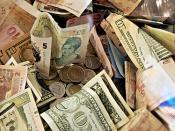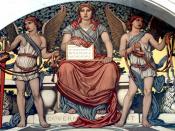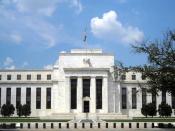A major factor in interest rate changes is the "monetary policy" of governments. If a government "loosens monetary policy", this means that it has "printed more money". Simply put, the Central Bank creates more money by printing it. This makes interest rates lower, because more money is available to lenders and borrowers alike. If the supply of money is lowered, this "tightens" monetary policy and causes interest rates to rise. Governments alter the "money supply" to try and manage our economy. The trouble is; no one is quite sure how much money is necessary and how it is actually used once it is available. This causes economists endless debate.
Another very important factor is inflation. Investors want to preserve the "purchasing power" of their money. If inflation is high and risks going higher, investors will need a higher interest rate to consider lending their money for more than the shortest term.
After the very high inflation years of the 1970s and early 1980s, lenders had to receive a very high interest rate compared to inflation to lend their money. As inflation dropped, investors then demanded lower rates as their expectations become lower. Imagine the plight of the long-term bond investor in the high inflation period. After lending money at 5-6%, inflation moved from the 2-3% range to above 12%! The investor was receiving 7% less than inflation, effectively reducing the investor's wealth in real terms by 7% each year.
For the sake of a quick analysis of the rates, following is an illustration of Fed Rates.
(Source: Financial Sense Online)
Recent Beige Report Summary
According to Beige Book (March 2004), economic activity continued to expand in January and February, (Federal Reserve District Banks). Growth was described (variously) as moderate in Boston, Philadelphia, Cleveland, Atlanta, Chicago, St. Louis, and Kansas...


